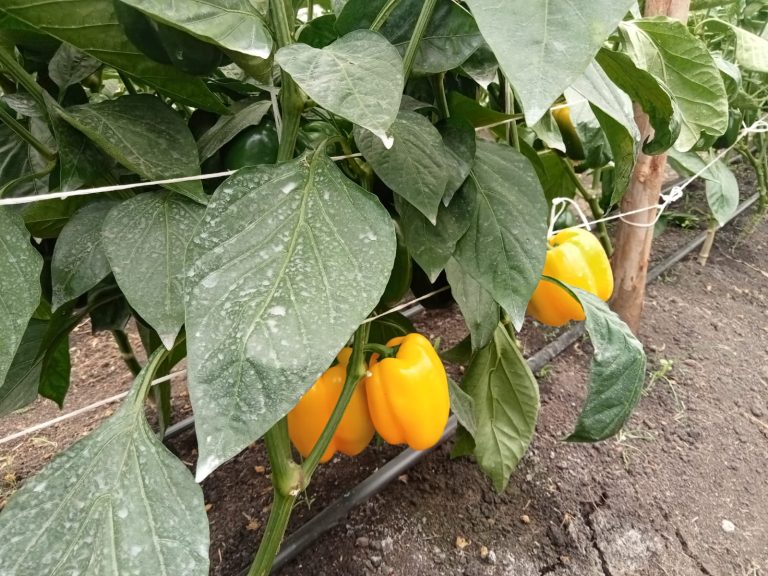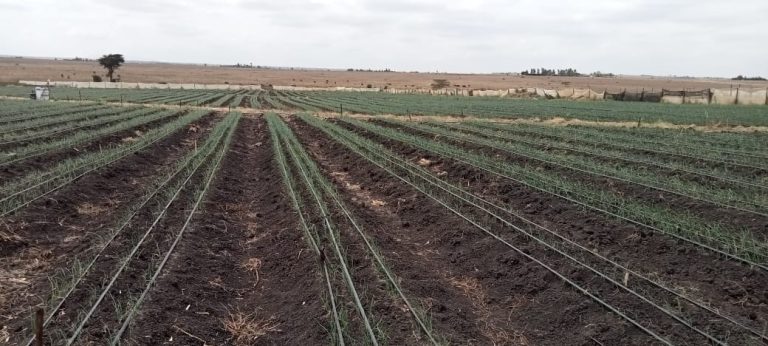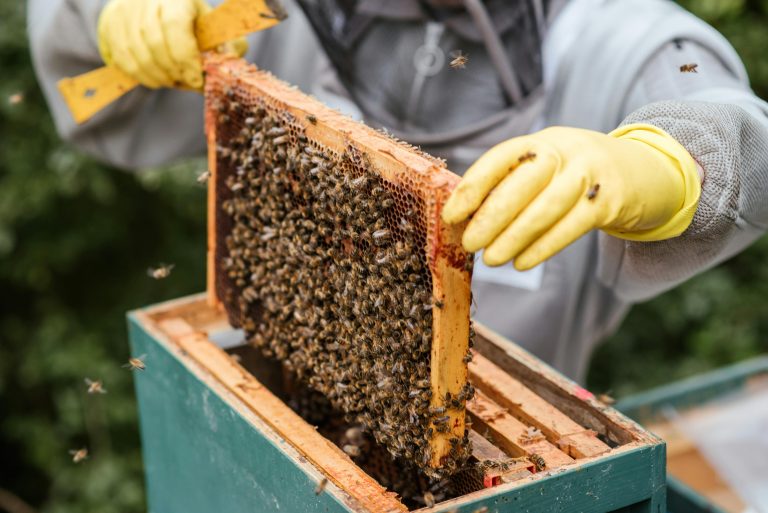INTRODUCTION
Imagine investing millions into an herbs farm, securing export contracts, and envisioning steady profits—only to watch your entire shipment get rejected at a European port due to pesticide residue levels exceeding EU standards. This nightmare scenario is more common than you think.
Kenya’s herbs farming industry presents a golden opportunity, with rising global demand for fresh basil, mint, rosemary, and coriander. The European market, in particular, is lucrative, fueled by health-conscious consumers and a thriving food industry that values fresh, organic produce. However, while herb farming for export can be a high-return investment, it is also riddled with pitfalls entrepreneurs overlook. From stringent regulations to logistical nightmares, success requires careful planning, knowledge, and the right strategies.
Before you jump into herb farming for export, let’s uncover the critical warning signs that could determine whether your venture thrives or fails.
COMMON PITFALLS IN HERBS FARMING FOR EXPORT
1. Lack of Proper Market Research
Many aspiring herb farmers in Kenya assume that growing high-demand herbs is enough to secure profitability. However, failing to research specific market needs, pricing trends, and buyer requirements can lead to losses. The European market has distinct preferences for herb varieties, sizes, and packaging specifications. Without this knowledge, farmers risk growing herbs that don’t meet market expectations.
Case Study: David, a Nairobi-based agripreneur, invested heavily in dill farming, believing it had strong export potential. However, he later realized that demand for dill was limited, and he struggled to find buyers. If he had conducted proper market research, he could have focused on more lucrative herbs like basil or chives.
2. Underestimating Export Requirements
European Union (EU) regulations on fresh produce are among the strictest in the world. Farmers must comply with regulations regarding pesticide residues, organic certification, and traceability. Missing a single requirement can lead to rejected shipments and financial losses.
Real-Life Warning: In 2023, multiple Kenyan exporters faced bans from the EU market after failing to meet Maximum Residue Levels (MRLs) for pesticides. These bans not only affected individual farmers but also tarnished Kenya’s reputation in the global herbs trade. To avoid this, farmers must adopt Good Agricultural Practices (GAP) and work with certified agronomists to ensure compliance.
3. Poor Planning & Farm Management
Herbs farming is not as simple as planting and harvesting. Mistakes in irrigation, spacing, and disease control can lead to poor yields and substandard quality. Herbs like basil and mint require controlled moisture levels to prevent wilting, while rosemary and thyme need well-drained soils to thrive.
Metaphor: Think of herbs farming like running a high-end restaurant—precision in ingredients, cooking time, and presentation determines success. Similarly, attention to detail in soil health, pest control, and harvesting techniques can make or break a farming venture.
4. Financial Risks & Hidden Costs
Many investors underestimate the financial commitment required for successful herbs export. Beyond seeds and fertilizers, costs include certification fees, cold storage, freight charges, and quality control measures. Overlooking these expenses can result in budget shortfalls and operational disruptions.
Investor Insight: “I thought getting GlobalG.A.P certification was a simple process, but it required costly audits and infrastructure adjustments,” recalls Esther, an agribusiness investor. “It took me six months longer than expected, delaying my first export batch.”
5. Logistics & Post-Harvest Handling Mistakes
Unlike local produce, exported herbs must arrive fresh, vibrant, and free from contamination. Poor handling, delayed shipments, or inadequate cold storage can lead to rapid deterioration.
Example: A Mombasa-based farmer lost an entire consignment of parsley after failing to maintain the required 2°C to 5°C storage temperature during transport. By the time the herbs arrived in Europe, they had wilted and were deemed unsellable.
Final Thought
Understanding these pitfalls is the first step toward mitigating risks and maximizing returns in herbs farming for export. In the next section, we’ll explore export requirements, certifications, and how to ensure compliance with European market standards.
Want expert guidance on investing in herb farming? Contact Fincare Investments Limited today to explore our land leasing and purchase and agribusiness investment opportunities.
EXPORT REQUIREMENTS & REGULATIONS (EU STANDARDS & CERTIFICATIONS)
Navigating the European herb export market isn’t just about growing high-quality produce—it’s about compliance. Many Kenyan farmers have faced devastating losses because they overlooked strict EU regulations. For instance, in 2023, multiple shipments of fresh basil were rejected due to excessive pesticide residues, costing farmers millions.
To successfully export fresh herbs to Europe, farmers must adhere to pesticide residue limits (Maximum Residue Levels – MRLs), ensuring their produce is free from harmful chemicals. Organic certification is another gateway to premium pricing, requiring strict adherence to natural farming methods. Additionally, traceability regulations demand that every herb shipment be trackable from farm to fork, ensuring food safety and transparency.
Complying with Good Agricultural Practices (GAP) isn’t just a formality—it’s a necessity. EU buyers prioritize suppliers who meet these standards, making it the difference between securing a long-term export deal or watching your produce get rejected at the border.
MARKET TRENDS & DEMAND FOR FRESH HERBS IN EUROPE
For many aspiring herb farmers, navigating regulatory hurdles is just the first step. Understanding market trends is equally vital to ensuring profitability. Across Europe, consumer preferences are shifting toward organic, pesticide-free, and sustainably sourced fresh herbs. With rising health consciousness, buyers increasingly favor farm-to-table produce, driving demand in supermarkets, specialty stores, and direct-to-consumer online platforms.
The organic herbs sector alone is projected to grow at a CAGR of over 7% in the coming years, fueled by dietary trends like clean eating, plant-based lifestyles, and culinary exploration. Retailers and wholesalers prioritize traceability, pushing farmers to adopt eco-friendly certifications such as Global G.A.P. and EU Organic.
For investors, this presents both an opportunity and a challenge—meeting strict standards while capitalizing on a booming market. Successfully aligning production with these trends can mean the difference between thriving in Europe’s competitive market and struggling to find buyers.
FINANCIAL RISKS & HIDDEN COSTS THAT FARMERS OFTEN OVERLOOK
The booming European market for fresh herbs is enticing, but many farmers underestimate the financial hurdles lurking beneath the surface. While demand is high, fluctuating market prices can erode profits, leaving farmers struggling to break even. Additionally, hidden operational costs—such as irrigation maintenance, pest control, and post-harvest handling—can quickly add up.
Compliance expenses are another major challenge. Meeting EU standards requires investments in certifications, lab testing, and sustainable packaging, all of which can strain finances before the first shipment even leaves the farm. Many herb farmers also overlook the cost of export logistics—cold storage, freight charges, and import duties—which can eat into margins.
Without careful financial planning, what seems like a promising venture can turn into a money pit. Savvy investors must anticipate these hidden costs to ensure their herb farming business remains profitable and resilient in the long run.
LOGISTICS & COLD CHAIN MANAGEMENT FOR MAINTAINING HERB FRESHNESS
Even after overcoming financial hurdles, herb farmers face another critical challenge—ensuring their produce reaches the market fresh and intact. Herbs are delicate, and without proper cold chain management, they can wilt before ever reaching consumers. Temperature fluctuations, delays in transportation, and improper packaging can lead to spoilage, translating to significant financial losses.
To prevent this, farmers must invest in cold storage, efficient supply chain coordination, and real-time temperature monitoring. Technologies like refrigerated trucks and humidity-controlled packaging help maintain quality. Ultimately, a well-managed logistics system ensures herbs arrive fresh, preserving both product value and market reputation.
STRATEGIES FOR SUCCESS (BEST PRACTICES FROM TOP-PERFORMING KENYAN HERB FARMERS)
Beyond efficient logistics, successful Kenyan herb farmers embrace a holistic approach to ensure profitability and sustainability. Many leverage greenhouse farming for year-round production, shielding crops from unpredictable weather while optimizing yields. Precision irrigation techniques help conserve water, crucial in Kenya’s semi-arid regions.
To meet premium market standards, farmers integrate organic farming methods, tapping into the growing demand for chemical-free produce. Contract farming provides market stability, while export-ready certification opens doors to lucrative international markets. Strategic planning is key to long-term success.
REAL-LIFE CASE STUDIES OF SUCCESSFUL OR FAILED HERB FARMING BUSINESSES IN KENYA
In Kenya, some herb farmers have built thriving businesses, while others have faced costly failures. Miriam, a small-scale farmer in Naivasha, turned her fortunes around by adopting greenhouse farming and targeting the EU export market. Her investment in organic certification and cold chain logistics earned her a stable contract with a European distributor.
On the flip side, Joshua from Murang’a struggled after failing to research market demand. He invested heavily in basil without securing buyers, leading to unsold stock and financial loss. These cases underscore the power of planning, market alignment, and financial foresight in herb farming.
CONCLUSION
Herbs farming for export offers a golden opportunity, but success hinges on preparation and strategic execution. As seen in previous case studies, thriving farmers invest in research, meet EU regulations, and master cold chain logistics. On the flip side, those who rush in without due diligence face costly rejections and financial losses.
Think of herb farming as a high-stakes marathon—not a sprint. Sustainable profits come from consistency, quality, and compliance. Before diving in, ensure you have the right knowledge, certifications, and market connections. With proper planning, this venture can be a rewarding pathway to agribusiness success.
HOW FINCARE INVESTMENTS LIMITED SUPPORTS AGRIBUSINESS ENTREPRENEURS
A successful agribusiness begins with the right foundation—land. Fincare Investments Limited provides affordable, strategically located farmland in Isinya, Kajiado County, available for both Lease and Purchase. This fertile region, ideal for crop cultivation and livestock farming, empowers entrepreneurs to maximize productivity. With secure land access, agripreneurs can focus on growth, innovation, and long-term profitability.
FREQUENTLY ASKED QUESTIONS (FAQS) ON HERBS FARMING IN KENYA
As you consider investing in herb farming for export, you likely have questions about the process, costs, and regulations. Below are answers to the most frequently asked questions to help you make informed decisions.
1. What are the best herbs to grow for export in Kenya?
The most in-demand herbs in the European market include basil, mint, rosemary, coriander, thyme, and dill. These herbs are favored for their culinary and medicinal properties. However, market demand fluctuates based on seasonality and buyer preferences, so conducting thorough market research before planting is essential.
2. How much capital is required to start an herbs export business?
Starting an export-oriented herb farm requires an initial investment of approximately Ksh 500,000 to Ksh 2 million, depending on factors such as land size, irrigation systems, and compliance with export standards. Additional costs include certification, cold storage, and logistics.
3. What certifications do I need to export fresh herbs to Europe?
European importers require key certifications such as GlobalGAP, Organic Certification, and Phytosanitary Certification to ensure product safety and compliance with EU regulations. Meeting Maximum Residue Limits (MRLs) for pesticides is also critical to avoid shipment rejection.
4. What are the biggest challenges in herbs farming for export?
Common pitfalls include poor quality control, high rejection rates due to pesticide residue, lack of direct market access, and inadequate cold chain logistics. Successful farmers overcome these challenges by implementing strict farming practices, investing in compliance, and working with reliable export partners.
5. How do I find buyers for my herbs in Europe?
Farmers can secure European buyers by partnering with established exporters, joining agribusiness cooperatives, or leveraging digital platforms like Alibaba and TradeKey. Attending international food expos and engaging with importers directly can also open market opportunities.







